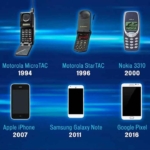The music industry has undergone significant transformations over the decades, reflecting changes in technology, consumer preferences, and distribution methods. This evolution continues to shape the landscape of how music is created, shared, and consumed.
What Has Changed in the Music Industry?
The most notable changes in the music industry can be traced back to advancements in technology. From vinyl records to streaming services, the methods through which audiences access music have revolutionized how artists promote and monetize their work.
Who Are the Key Players in Today’s Music Ecosystem?
Today, the music industry includes a wide range of stakeholders:
- Artists and musicians
- Record labels
- Streaming platforms (e.g., Spotify, Apple Music)
- Concert promoters and venues
- Music distribution companies
When Did These Changes Occur?
Major shifts have occurred at various points in history:
| Year | Change |
|---|---|
| 1920s | Rise of radio as a popular music medium |
| 1980s | Introduction of CDs, replacing vinyl records |
| 2000s | Digital downloads began to replace physical sales |
| 2010s | Streaming services take over music consumption |
Where Is the Music Industry Headed?
Looking ahead, the future of the music industry seems to be even more intertwined with technology. The rise of artificial intelligence in music production and virtual reality concerts indicates a trend toward more immersive musical experiences. Additionally, social media platforms are increasingly serving as the launchpad for new artists.
How Are Artists Adapting?
To thrive in this evolving landscape, many artists are adopting new strategies:
- Utilizing social media for marketing
- Engaging directly with fans via live streams
- Exploring various revenue streams, such as merchandising and crowdfunding
Conclusion: Embracing Innovation in Music
The evolution of the music industry highlights the impact of technology and consumer behavior on artistic expression and commerce. As the landscape continues to shift, artists and industry professionals must remain adaptable to succeed in this dynamic environment.














